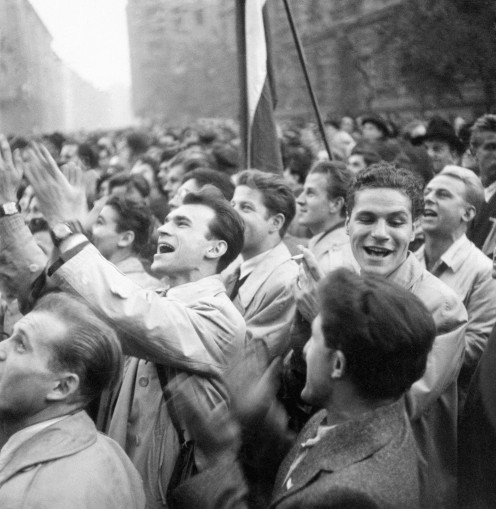About the Memorial Day
On 23 October 1956, the revolt against Soviet occupation and Communist repression began as a demonstration of university students in Budapest. After the student demonstrations, hundreds of thousands outside the House of Parliament listened to Imre Nagy’s speech in which he promised reforms. The bloody volley shot into the unarmed crowd at the building of the Hungarian Radio resulted in the growth of an armed uprising by the evening. The protesters tore down the Stalin Monument – the symbol of Communist dictatorship – on Dózsa György Road, and occupied the building of the Hungarian Radio by dawn.
Although in the following days the legally formed government of Imre Nagy took the first steps towards democratic transition, and the negotiations over the withdrawal of Soviet forces also commenced, on 4 November the Russian tanks started advancing on the capital without declaration of war. By about 10 November, the superior force defeated the resisting armed civilian insurgents. Fearing reprisal, hundreds of thousands fled the country, but even so, the Kádár regime imprisoned thousands of people, and several hundred freedom fighters were executed.
After the crushing of the revolution, it was forbidden to commemorate 23 October, or even mention it. According to the official Communist position, a “counter-revolution” took place, organized by “reactionaries” and “common criminals”. It was only those who emigrated abroad who openly kept alive the memory of 23 October.
In Hungary, in parallel with the weakening of the regime at the end of the 1980s, the true story of 1956 began to get publicity. 23 October became a symbol, as attested by the fact that it was on 23 October 1989 that Mátyás Szűrös, the then acting head of state proclaimed the Third Hungarian Republic in front of a crowd of hundreds of thousands gathered outside the House of Parliament.
Under Act VIII (1991), the new, democratically elected National Assembly declared 23 October an official national holiday, and the Fundamental Law of Hungary (2012) also confirmed its status.
By tradition, after raising the national flag of Hungary on the Memorial Day, the heroes and victims of 1956 are commemorated at designated sites of the Revolution (the Budapest University of Technology, the Bem statue, the building of the Hungarian Radio, and the sites of clashes in Budapest).
